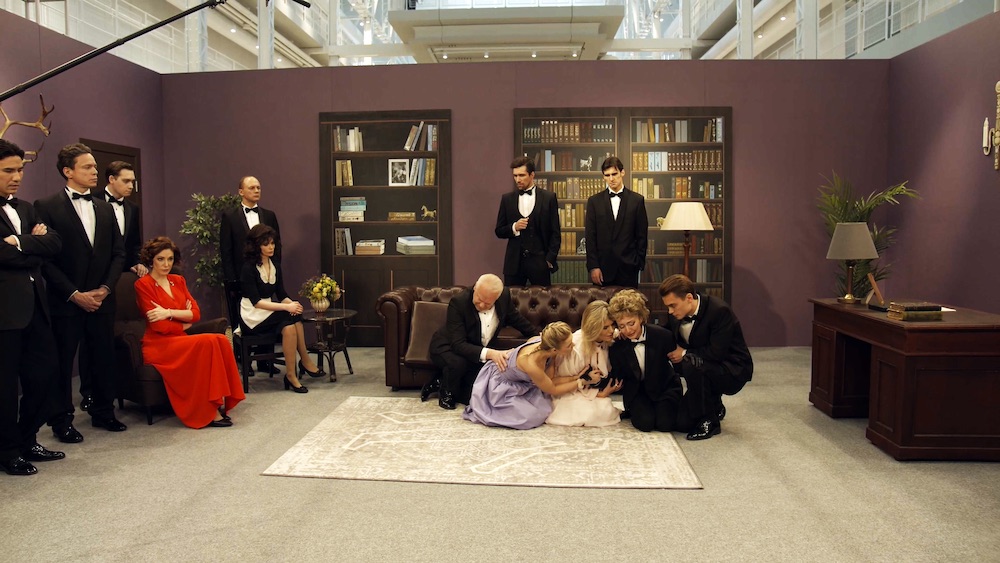‘Soviet Barbara’ Review: When High Art Collides With Global Politics
Offering a singular perspective on Russia’s current pariah status in much of the world is Gaukur Ulfarsson’s “Soviet Barbara,” probably the most enjoyable — as opposed to depressing — documentary involving the invasion of Ukraine you’re likely to see. It focuses on Icelandic multimedia artist Ragnar Kjartansson’s preparation for exhibits that would open a major new museum in Moscow.
That launch proves fatefully ill-timed in terms of larger events, however, even as his splashiest custom creation provides ironic commentary on recent Russian history by reprising an American TV soap opera that had been an unlikely imported smash in the nation’s immediate post-USSR years. The colorful intersection between art, ideology, patronage and politics should appeal to a wide range of nonfiction outlets and programmers.
The power of art to enflame emotions is illustrated straight off by Kjartansson’s discussion of a famous 19th-century oil by Ilya Repin that depicts mad Ivan the Terrible cradling the body of the son he’s just killed — a controversial canvas over-excited spectators have twice physically attacked. The 21st-century artist’s own work is generally of a much more playful nature, its influences encompassing everything from his parents’ film/theater careers and his own ongoing rock band Trabant to video performance art. While sometimes working in the more traditional idioms of painting or sculpture, he frequently combines forms to offer layered input on subjects as diverse as colonialism, environmental crises and art history itself.
Thus edgy yet accessible, with a still-rising international profile (and convenient fascination with all things Russian), he’s a smart choice as key guest contributor in the long-aborning inauguration of a modern art museum. GES-2 House of Culture is a shuttered former power plant built in 1907, just a stone’s throw from the Kremlin. The expensive endeavor’s funder is billionaire oligarch Leonid Mikhelson of Russian petrochemical giant Novatek, who is notably little-seen here.
Kjartansson admits mixed feelings toward accepting the largess of Putin allies in a repressive state. “I thought to myself, am I just a pawn in whitewashing Russia?” he asks. He rationalizes this gig (which consumed much of four years) as “maybe not morally right but artistically right,” particularly as he’s including “works which criticize the power.” He also notes it would be hypocritical for him to refuse when he’d already shown at New York’s Metropolitan Museum of Art, which is financially tied to the oft-deplored Koch and Sackler families.
In any case, the artist seems too good-natured to be more upset than amused by the ethical quandaries. He’s even tolerant of some censorious tweaks to content levied by museum’s minders — feeling still enough on the side of the angels that he invites Maria Alyokhina aka “Masha” of notorious politically dissenting art group Pussy Riot to tour the site pre-opening. (She cautions him, however, that any disseminated photographs of her presence might cause the whole place to be shut down.)
As finishing touches are put on the transformed GES-2 as a whole, Kjartansson and collaborator/spouse Ingibjorg Sigurjonsdottir prepare their two-part contribution. One is a retrospective of his works, mingled with artists he’s influenced by. The other is a huge, one-time-only gambit: live reenactments, in Russian, of entire episodes from the 1980s U.S. afternoon soap opera “Santa Barbara,” whose NBC run had nearly ended when it premiered in Russia, just a week after the demise of the Soviet Union. Amid post-Communist economic chaos and deprivation, its backstabbing conflicts within a corrupt “Dynasty”-style wealthy elite proved an incongruous whopping hit.
This colossal enterprise, entailing extensive casts, crews, sets, costumes, hair and makeup over 100 days’ course (one per episode re-created), will no doubt be the new museum’s initial publicity magnet. Original series creators Bridget and Jerome Dobson, now elderly, are even flown out to be feted.
But Ulfarsson, of 2019’s tongue-in-cheek vampire feature “Thirst,” uses split screen imagery to chart far more ominous concurrent preparations: refugees piling up at various Eastern European borders as Russian troops are transported en masse to positions just outside Ukraine’s own easterly edge. When the dreaded invasion does occur, just weeks past GES-2’s opening in December 2021, Kjartansson feels there’s no choice but to pull stakes from what he says “has become a full-blown fascist state.”
He’s great company, and “Soviet Barbara” is insightful as well as entertaining in detailing all the intricacies of launching such a major show, including input from the fledgling institution’s multinational staff. But since all that becomes comparatively trivial, you might wish the film had left room for dealing with the resulting fallout. Instead, we simply get Kjartansson back in Reykjavik, philosophical about his curtailed sojourn. How problematic was his exit from the Russian commitment? What happened to the many “Santa Barbara” participants we’re told were Ukrainian? For that matter, how were the exhibits and the institution received?
Side-stepping those questions leaves Ulfarsson’s film seeming a bit incomplete. One can imagine some reasons of political delicacy and danger that might’ve led to their omission, but couldn’t those at least be alluded to? Still, “Soviet Barbara” provides a stimulating glimpse at art attempting dialogue across cultural and political borders, only to find war is one thing that shuts down such conversations.
English is the common language among most players here, so subtitling is relatively minimal. The museum setting, the artwork and personalities it contains as well as use of various archival materials make for a diverse, lively presentation that requires just minimal application of David Berndsen’s electronic score. Occasional impressive drone shots showcase Moscow as a glittering, prosperous capital — though this film’s otherwise expansive thematic reach does not allow for acknowledgement of any ironies that image might cloak.

